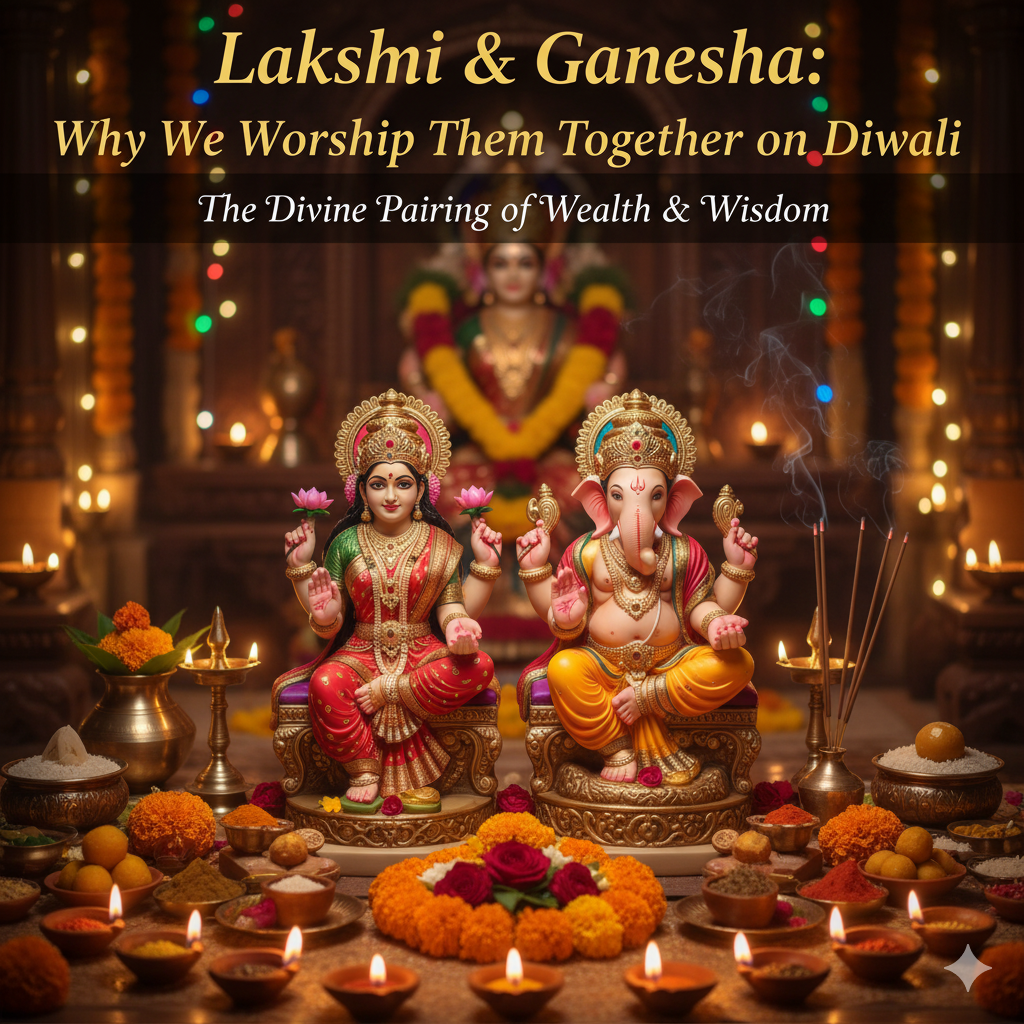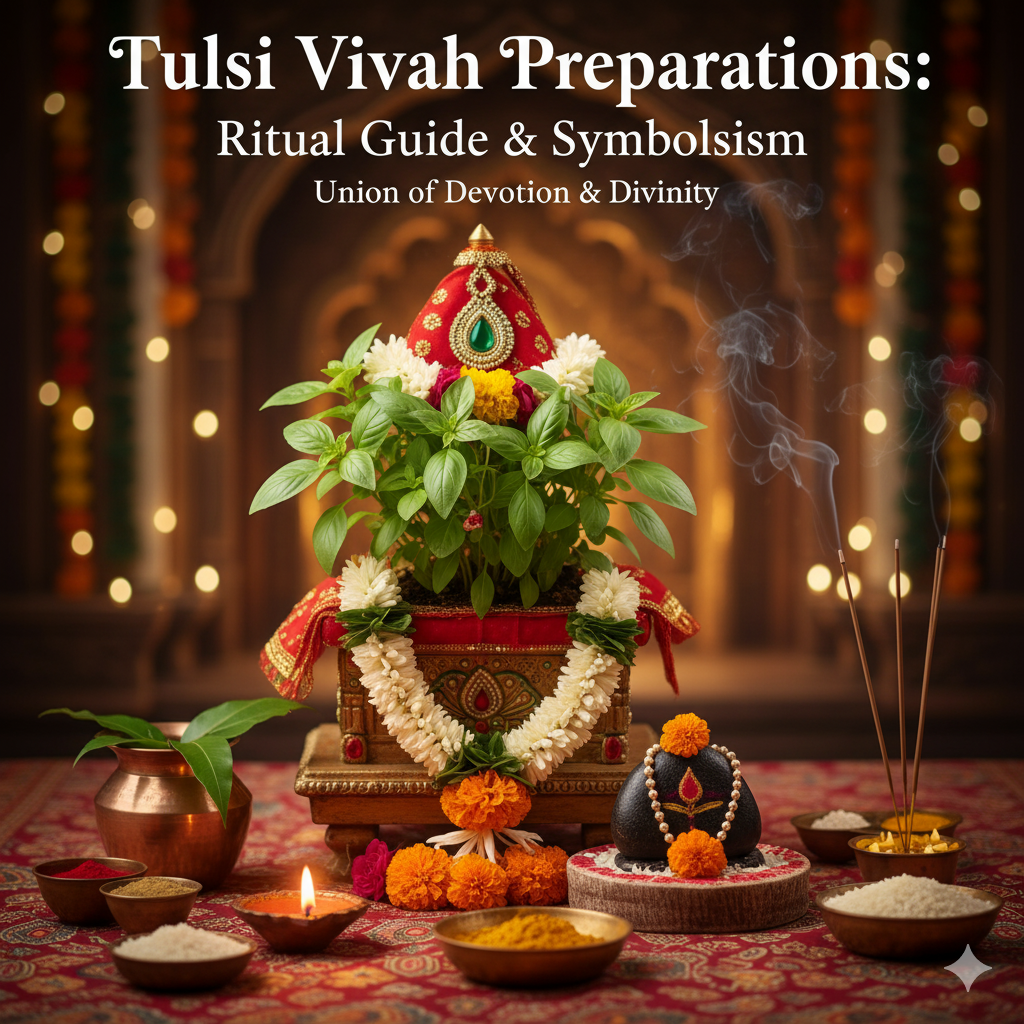
October 05, 2025
15 Rangoli Ideas for Small Homes (With Stencil Tips)
Rangoli brings color, joy, and positive vibration to every Indian home. Whether it’s Diwali, Tulsi Vivah, or Kartik Purnima, drawing Rangoli at your doorstep is believed to welcome Goddess Lakshmi and ward off negativity. If you live in an apartment or compact home, don’t worry — you don’t need a huge courtyard to celebrate this art. Here are 15 beautiful Rangoli ideas perfectly suited for small spaces, plus quick stencil hacks to make your designs neat, festive, and beginner-friendly. 🌸 1. Mini Lotus Rangoli A small lotus with four petals, drawn at the entrance, symbolizes purity and wealth.Stencil Tip: Use a round lid as a base outline and petals with a spoon back. 🌿 2. Lakshmi Charan Paduka Design Two tiny footprints leading into your home — a Diwali favorite!Use rice flour or white chalk powder for purity. Add a pink outline for charm. 👉 For authentic Lakshmi Charan Paduka, explore Prasadam Collection. 🪔 3. Diya Pattern Rangoli Create a circle of diyas with alternating yellow and red petals.Place actual Eco Clay Diyas (₹249) from Prasadam on top — a blend of art and light. 🌼 4. Peacock Corner Rangoli Perfect for corners — a half peacock feather in green and blue tones adds elegance without space overload. 🎨 5. Mandala Circle Rangoli Start from the center and draw concentric rings with dots and tiny petals.Stencil hack: Use bottle caps to make perfect rings. 🌺 6. Tulsi Pot Rangoli Draw a small Tulsi plant motif with green leaves and a brown base — symbolizing Kartik purity. 💮 7. Floral Minimal Rangoli Use marigold and rose petals instead of powders for a sattvic, eco-friendly look.Budget: ₹100 for fresh flowers. ✨ 8. Swastik Design for Doorstep A classic symbol of protection and prosperity.Draw a red Swastik inside a white circle — quick and auspicious. 🌼 9. Half-Circle Balcony Rangoli Ideal for small balconies — use semi-circular patterns with gradient colors for depth. 🌸 10. Minimal Dot Design for Corners Arrange dots in 3×3 or 5×5 grid and connect with curves — traditional and easy. 🕉️ 11. Om Rangoli Center your design around the Om symbol — use white powder for the symbol and blue border for peace. 🌙 12. Moon and Star Rangoli Perfect for children to participate — use stencils and glitter to add playfulness. 🪷 13. Two-Tone Lotus Stencil Art Combine pink and orange petals for a Lakshmi-friendly design. Keep it under 1 sq. ft for apartments. 🕯️ 14. Kartik Deepdan Rangoli Draw 108 tiny dots and connect them into lamp motifs. Light ghee diyas at intervals for a devotional touch. 👉 Shop pure ghee and dhoop from Prasadam Essentials. 💐 15. Stencil-Only Quick Rangoli Buy ready stencils (₹99–₹199) — fill colors through sieves for perfect edges. Ideal for busy festive mornings. Color Combos for Festive Vibes Theme Palette Traditional Red + Yellow + Orange Divine White + Gold + Pink Modern Turquoise + Silver + Magenta Earthy Brown + Green + Marigold Rangoli Tips for Small Spaces ✅ Use powder rangoli only in corners and thresholds.✅ Keep wet wipes or paper towels nearby.✅ Combine flower petals with powders for dimension.✅ Outline with rice flour for definition. After Ritual Care At the end of the day, sweep the rangoli gently and offer the powders to Tulsi or plants as prasad to Mother Earth. Conclusion You don’t need a big porch for beauty — you just need intention. These 15 rangoli designs can transform even the smallest corners into portals of light and joy. ✨ Complete your Diwali setup with Prasadam Kits & Diyas under ₹1,100 and fill your home with color and calm.










